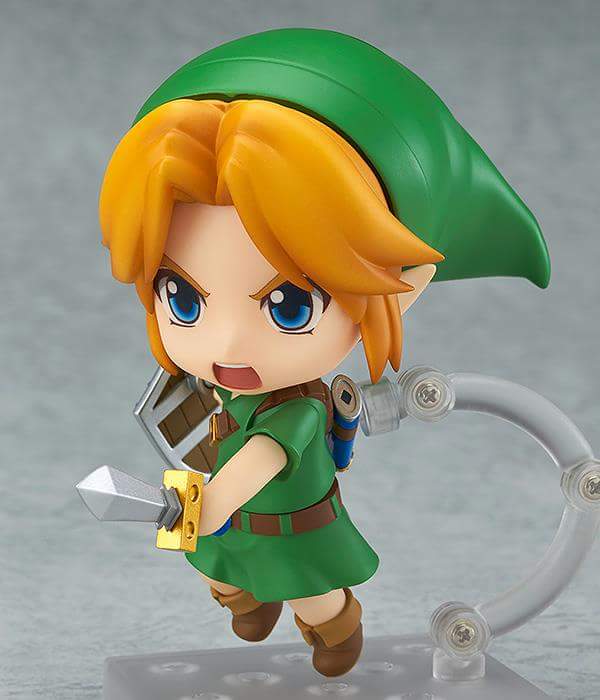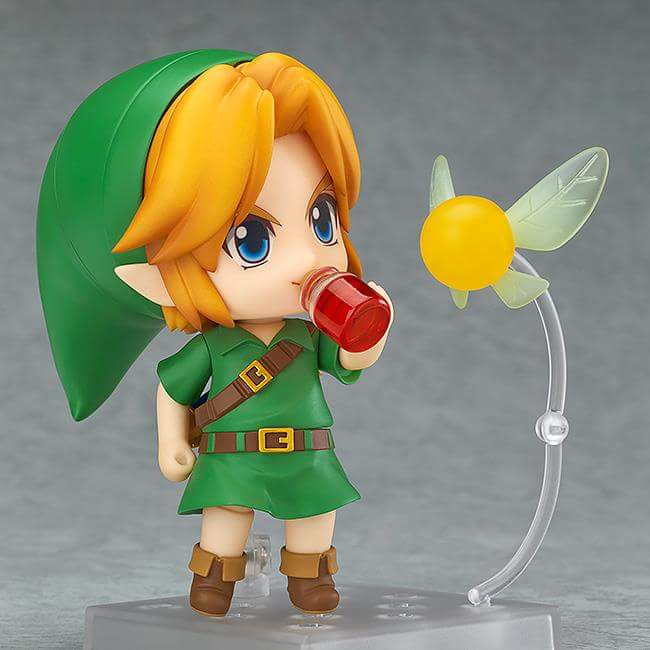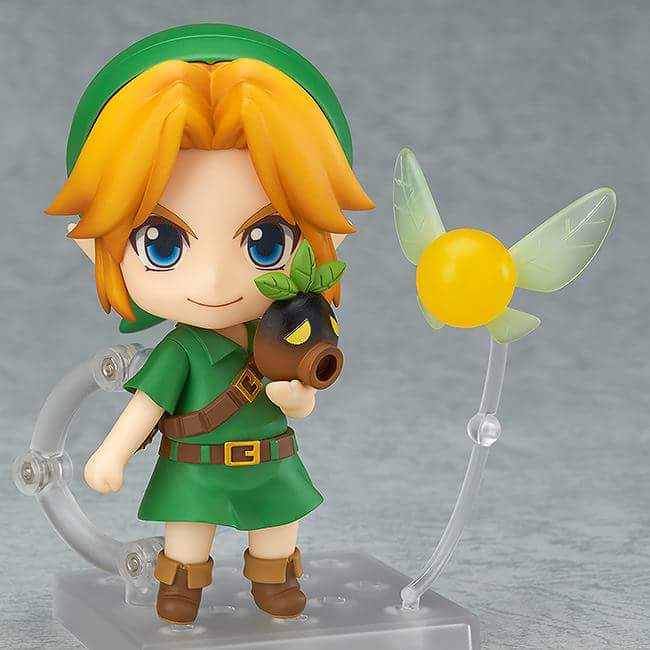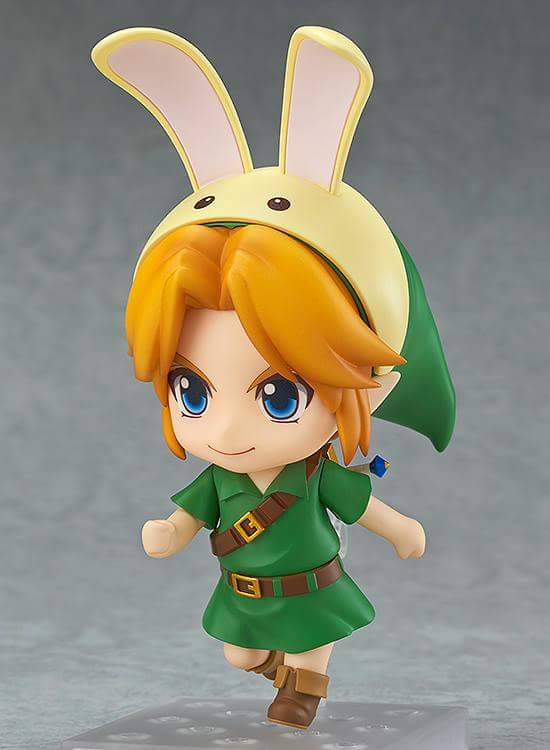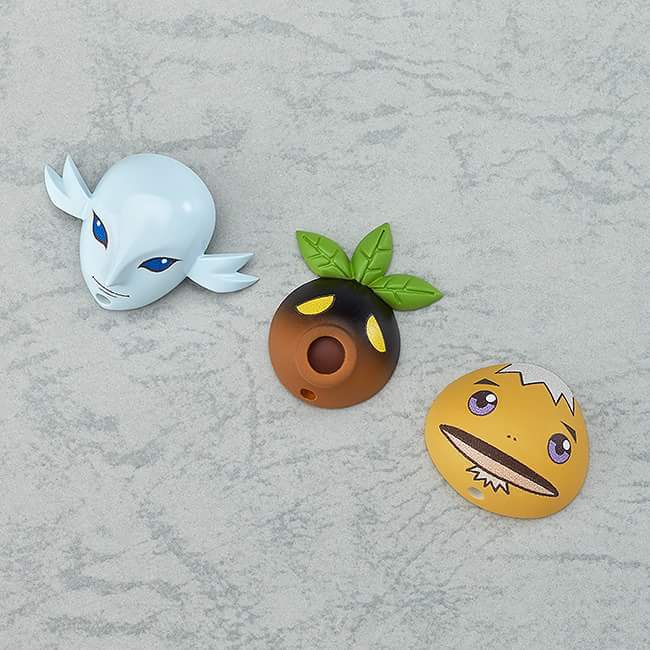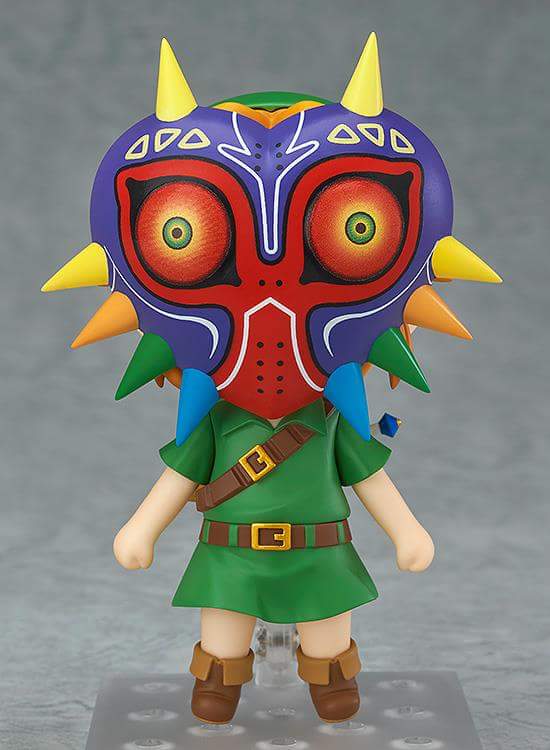If you never experienced A Link to the Past, or if you didn’t experience it when it first came out over a decade ago, you might not get what the big deal is about this title. For those of you who were lucky enough to get the opportunity to play A Link to the Past, you probably would agree it is a wonderful game, especially considering when it came out.Also to point this out, according to the zelda timeline, this game takes place right after the ocarina of ime,in the timeline, it follows link in the path that branches to “the hero of time is defeated”
Gameplay
At heart, A Link to the Past is just a blend of the original Legend of Zelda with a dash of The Adventure of Link. You navigate Link through Hyrule and the dungeons via a top-down view and choose your equipment via an item sub-menu. You can initially explore much of Hyrule, but to progress on to later areas, you must aquire new items which you get from the dungeons. The Super Nintendo allowed for a much more complex game system, which can be seen in the vast amount of items Link can utilize, the enormous dungeons with multiple levels, the plethora of enemies on screen attacking Link and the challenge of tough puzzles.
Just start with Link’s primary weapon, the sword. Link can now use it in so many ways; he can swing it normally, he can charge it up to unleash a spin attack, he can hold it out to poke at things, he can dash with it and he can shoot out swirling lasers from it. Many of the classic items made a return, like the boomerang, bombs and bow and arrows, but some of the new ones became staples of the series. Who can forget the Hookshot, the Bombos Medallion, the Magic Cape or the Bug-Catching Net?
The overworld is laid out in a way where Link can initially peak around in every single area, but he can’t necessarily access all he sees. Boulders block his path in the mountains, while stone statues barricade the way into the Desert Palace. I wonder how many people got stuck trying to reach the Tower of Hera, a puzzle which forces the player to finally enter the Dark World for the first time. Besides the essentials of the overworld, there are tons of secrets hidden throughout the land. Heart containers, rupee caves and fairy fountains are aplenty in Hyrule.
However, the true beauty of the game comes from the dungeons. Masterfully designed, and probably unmatched even today, the dungeons in A Link to the Past were both challenging and numerous. More than just pushing blocks, killing all the enemies or bombing a wall like in the previous installment, A Link to the Past made the player truly think in order to progress. Items had to be used to their full potential in order to advance onward. Those lucky enough to survive the dungeons were rewarded with extremely awesome boss battles. You may have heard this already, but each boss truly feels unique.
The ease in which you control Link is the crux of this masterpiece. If you played the original installment, you already know how to operate the sword and your special item. Additionally, the extra buttons are put to good use. The A Button will later on allow you to utilize the Pegasus Shoes, an item which makes Link dash at full speed. Link could also access a graphic map instead of a plain and blocky grid-map. Bottles allowed Link to store items like magic potion or fairies. The hookshot could be used to pull Link across long distances, or pull distant things to him. Bombs could not only blast enemies and walls, they could blast Link and hurt him (which is actually a blessing if you know how to exploit it). All future Zelda games owe their gameplay to this installment.
Graphics
A Link to the Past was made relatively early on in the life cycle of the Super Nintendo, which many would label as a first-generation title. Even still, the graphical achievement in this game was superb. The SNES showed off its ability to render layers and scale objects. This is crucial for all of the dungeons and several areas of the overworld. The animations of Link as he traverses Hyrule makes it hard to believe how convincing he looked in the NES games. Enemies came to life; just knock a guard off the edge into a pit.
The overworld truly felt like it flowed together extremely well, as opposed to the blocky nature of the previous installments, in which the world radically changed at the advancement of a single screen. Players will also notice that even though the screen “scrolls over” at edges, that the screens themselves will actively scroll with Link to give the effect of a larger on-screen area. The graphical power of the SNES also allowed for NPCs to exist in the game, along with a sprawling town in the form of Kakariko. Hyrule felt alive.
In sharp contrast, the dungeons in the games were each very unique and had a very dark and grim feel. The Desert Palace had sand across much of the floor. The Swamp Ruins had water running through it. The Ice Palace gave our hero trouble as he slid across the slippery surfaces. The entire game just felt so massive and alive thanks to the excellent work the graphical design team did for A Link to the Past. Sure, by today’s standards, Four Swords Adventures and The Minish Cap make A Link to the Past look a bit dated. But not that dates. Even amongst next-generation two-dimensional games, A Link to the Past still holds its own.
Audio
Sure, The Legend of Zelda established the famous Zelda theme. But it was A Link to the Past that established nearly every other great Zelda tune fans have come to love. Would you like us to list off some of the great hits? How about the soothing melody of Kakariko Village, the powerful charge of the Light World theme (yes, it’s just another version of the original game’s overworld theme, but it still rocks), the elegance of the Fairy Fountain theme, the majesty of Hyrule Castle’s them or the power of the Dark World theme?
Just about every song in this game went on to become a fan favorite, and many of them have been used over, and over … and over again in later installments. But it’s not just the soundtrack. It’s the sound-scape. The sound effects in this game were pretty good. Though the sound of Link swinging his sword sounded a bit goofy, and the loud bang made when dashing into a wall is a bit overexaggerated, many of the other effects were nice. Take that sword and tap it against wall. Notice the ping it makes, especially when you do it to a weaker section of the wall with a crack. Blows against armored foes made a clang. Arrows impacting against a surface made the pop you would expect.
Alright, so maybe by today’s standards, the effects are a bit weird and unrealistic. But this is a fantasy game, and one that is over a decade old. I don’t think I’ve ever heard somebody tell me that the sounds in the game annoyed them or detracted from the game at all. It is just too bad that wit the re-release on GameBoy Advance a few years ago, Nintendo had to add in those horrific yells of Young Link from Ocarina of Time. Even still, the sounds give the game a fantasy tone, which is sufficient.
Challenge, Fun and Replay Value
A Link to the Past probably will frustrate gamers who grew up in the three-dimensional era, but those who somehow missed this gem the first time around who are familiar with two-dimensional adventure games should really find themselves at home with this title. Sure, some of the puzzles will make your brain hurt or cause you to check GameFAQs, but that’s pretty much a requisite (well, at least once in each game) of a Zelda title. The boss battles, should you actually find out the key to their weakness (cough, dungeon items, cough), become a bit more manageable.
But this isn’t like the newer titles, in which Link can withstand one-hundred blows before dying. Some bosses will take down Link in as little as two-to-three blows. So be prepared to try again frequently on most dungeons. However, the challenge never gets to the point of frustration, and most will find the challenge a welcoming element for those pampered by the built-in game aids in future installments. Also, unlike its three-dimensional brothers, doing everything in A Link to the Past won’t take up the rest of your lifetime.
Simply collecting the extra heart containers, finding all the upgrades and locating all the items is the only requisite of this title. No trophy or statue hunting. No excessive heart container collecting. No Skulltula or Mask collecting. Everything is very manageable and very rewarding for the time it takes to accomplish. The pace of play is very good, with the story developed very loosely in game to drive the player on.
Final Verdict
This is like the Bible of Zelda. If you haven’t played it, you don’t know Zelda. If you have, you get it. The graphics and two-dimensional gameplay may turn off fans who grew up on Ocarina of Time (or joined the bandwagon then). But if you liked The Minish Cap, you will love this game. If you can get over your graphic obsession, you will find that A Link to the Past is truly a great game, and you will finally understand why fans frequently call out its name when the discussion of best game ever is thrown around.
Gameplay: 10.0
Graphics: 9.5
Sound: 8.0
Challenge, Fun and Replay Value: 9.0
Final Score: 9.1

